Do you want to learn how to build muscles? Keep reading to learn!
You’re a newbie who wants to begin gaining muscle mass but isn’t sure where to begin? What foods should you eat, how should you train, and what supplements should you take? Look no further; this guide was created just to answer your most pressing questions. We’ll quickly go over the most crucial things to look out for so you can get a clear picture of what to expect.
DIET:The most important for build muscles
The first and most crucial item to consider if we truly want to gain muscle mass is, of course, our food. It makes no difference how much time we spend practicing or how well we execute the activities. Nutrition accounts for 70-80% of the total process.
To begin, we must be in a calorie surplus in order to gain muscle mass. Simply said, we require more calories than our bodies require.
An active adult guy weighing 75 kg who wants to gain muscle mass should take around 3000 calories, whereas an active adult female weighing 50 kg should consume around 2400 calories.
You should first determine your basal metabolic rate (BMR) and total daily calorie expenditure if you want a more precise computation (TDEE). Then, to achieve muscle gain, increase your TDEE by 400-500 calories.
You can compute them using the specific program available at this URL.
Because there are three types of body types, we must emphasize that each individual is unique.
- Ectomorphic: Ectomorphs are naturally skinny people with small shoulders and waists. This indicates you may have a faster metabolism and should eat more calories, primarily carbohydrates, as a result. Ectomorphs find it difficult to consume all of the calories from whole foods, therefore liquid meals are more convenient for them.
- Endomorph: If you’re taller with broad shoulders and a broad pelvis, you’re definitely an endomorph. Because endomorphs have a slower metabolism and require fewer calories, you should limit your carbohydrate intake.
- Mesomorphic: If you’re lucky enough to have wide shoulders and a thin waist, you’re probably mesomorphic. This body type has a regular metabolism and finds it easy to gain muscular mass while maintaining a low body fat percentage
Macronutrients
Now that we’ve decreased the calories in half, it’s time to talk about macronutrients, which are the diet’s second most significant component. Protein, carbs, and fats are the three main components of our diet. To get the best outcomes, we need to strike a balance between these three factors, as each has its own set of advantages. If we want to have a healthy and powerful body, we need to eat a variety of foods.
A 75 kg person who exercises should generally follow the following formula:
Calories: 3000
Protein: 2 X body weight = 160g protein or 640 calories.
Fat: About 20-30% of its daily calories, ie around 700 calories or 77 g of fat.
Carbohydrates: The remaining calories, ie 3000-700-640 = 1660 calories or 415 g of carbohydrates.
So the body will have everything it needs to fully recover and have spontaneous energy to build muscle mass.Vitamins, minerals, fiber, water
Of course, getting enough fiber, vitamins, and minerals is a vital part of our diet. All of these things help to regulate our metabolism and make it perform better, resulting in a healthy and powerful body. Consumption of local water is also critical to avoid dehydration. On the other hand, keep in mind that our muscles are made up of 77 percent water!
List of the most important supplements for build muscles
Training
Read more here
Our bodies are harmed while training. We cause tiny damage to our muscle fibers by lifting weights. In fact, training is designed to “damage” our muscles. So, as soon as we stop exercising and rest, our bodies begin the process of healing injured muscle fibers, which activates protein synthesis. As a result, during recovery, our muscles are rebuilt and strengthened, allowing them to respond to the challenging exercise we undergo. In layman’s terms, the procedure is: Training-Destruction-Recovery-Repair.
The types of muscle contraction
Muscle contractions can be divided into three categories:
Meiometric contraction is a type of meiometric contraction (Concentric or Positive)
By overcoming gravity or external resistance, the weight “increases,” i.e. the muscle shortens.
contraction isometric
The weight stays put, which means the muscle contracts (shortens) yet the joints don’t move. Muscles can withstand a greater load in the negative phase than they do in the positive phase.
Pliometric contraction (pluometric contraction) (Eccentric or Negative)
The weight “drops,” meaning the muscle lengthens in a regulated manner, yielding to gravity or external resistance. The muscles can withstand weights that are 20-40% higher than those utilized in the positive phase.
Few people in the gym realize that lifting weights isn’t enough. Throughout the exercise, we must maintain a muscle inclination to drop the load slowly and in a regulated manner. As a result, we maximize the amount of damage we produce while also multiplying our gains in strength and hypertrophy. Lifting weights with your body and then letting them fall is ineffective. According to studies, the negative phase of exercise, often known as “lowering,” produces up to three times more muscle fiber damage than the positive phase. As a result, more injury equals more hypertrophy.
About Repetions
The following step is to decide on a set of repetitions. If we want to achieve hypertrophy, we should do 8 to 12 repetitions per set and keep the set time between 40 and 60 seconds. The positive phase should last around 1 second, while the negative phase should last about 2-3 seconds to achieve this.
About exercises and sets
Unfortunately, most novices make the error of overdoing it when it comes to the amount of exercises and sets. We can discover several programs on the Internet that include a big amount of instruction and are intended at a very advanced learner rather than a novice. To target every conceivable corner of the chest, a beginner does not need to execute six exercises with four sets, for example.
He will see far greater results if he only does two exercises of three to four sets apiece for each muscle group. This is because the body of a beginner need fewer sets to respond and begin gaining muscular mass. If a novice goes overboard, he will cause more harm than good.
Imagine that as soon as we take our first summer bath, simply a few minutes in the sun is enough to make us blush. As a result, we sit for a shorter time. We will burn if we sit for too long, which is both awful and horrible. The same may be said for education. This is where it enters the picture.
Summary:
Increase your calorie intake.
You must gain weight steadily. Increase your calorie intake a little if you cease putting in.
Protein should make up a large part of your diet, along with carbohydrates and fats.
Whole grains, lean meats, and healthy fats are preferred.
Drink plenty of water and eat a variety of vegetables.
Eat 4-6 meals per day, with a 3-4 hour gap between them.
Supplements are only effective if we pay attention to our eating habits.
Learn more about each supplement and how it might benefit you.
The precise method for doing the exercises, not the weight you lift, should be emphasized.
Emphasize the exercise’s negative aspects.
Perform 8-12 repetitions in each set for hypertrophy.
Don’t overdo it during training and don’t do more exercises than necessary.
Results will take months, not weeks, to appear.
